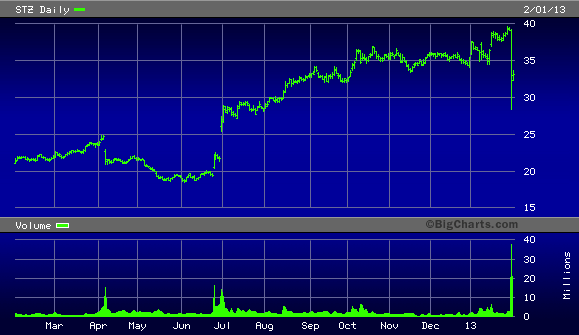The name of infamous Wall Street investor Jim Chanos’s firm is Kynikos Associates.
Kynikos is a Greek word. It means cynic.
Chanos is a short seller. He tries to make money off stocks that go down in price. So he’s always on the lookout for businesses and industries heading for trouble, before that trouble is factored into share prices.
Chanos started his firm in 1985. He’s been shorting stocks for almost thirty years. So when he speaks, it’s worthwhile tuning in.
In 2009, Chanos warned of China’s credit-fuelled construction boom. He was shorting the companies in and around it.
It’s now 2013, and he isn’t changing his mind. Today’s Money Weekend will explore why…
Rumbles in China’s Economy
The Financial Times put the spotlight on China this week when it reported Chinese banks avoided a default by rolling over loans made to local governments. Here’s an excerpt:
‘Local governments borrowed heavily from banks to fuel China’s stimulus programme during the global financial crisis and are now struggling to generate the revenue to pay them back, a shortfall that could cast a shadow over Chinese economic growth.’
The ratings firm Standard & Poor’s also came out this week after finishing a study about investment spending. Think airports, highways and other infrastructure projects. They concluded China had the highest risk in the world of a severe correction.
China’s investment as a percentage of GDP is near 50%, much higher than in countries like Japan and the United Sates during their years of high growth. Like anything, you can have too much of a good thing.
The economics behind some of these projects are highly dubious, but they show up in GDP. They also fuel demand for commodities such as iron ore and therefore have a big impact on Australia.
Now this is interesting because it’s probably fair to say the market has turned much more bullish on Chinese growth in early 2013 than it was in the second half of last year.
You might remember there was a lot of political uncertainty around the change of Chinese leadership and confusion about whether the slowdown in China was ‘managed’ or not.
Here we are today and the S&P/ASX 200 is rallying close to 5000 points. And there has been nothing to rock the boat from official Chinese statistics release either.
But beyond the headline GDP figures in China lies a murky link between the central and local governments, the banking system and the big state-owned firms. China built its economy through this based on exports and investment.
That model has stopped working. The idea now is for China’s central planners to shift the economy away from this model and rebalance it towards consumption.
New Boss Same as Old Boss
That’s the idea, but has anything changed?
Since the global financial crisis China’s economy has been hanging on thanks to huge amounts of credit being pumped into the system. And so far the new leadership transition hasn’t changed anything.
The FT Alphaville blog headlined an article last week ‘China’s massive credit dependency’.
Here’ an excerpt:
‘China’s credit growth has been extraordinarily high in the past year – the government’s aggregate or “total social financing” measure, which includes some forms of non-bank finance, showed 23 per cent growth in 2012, compared to an 8.5 per cent contraction in 2011…When you compare it to the size and growth rate of the economy as a whole, the growth in credit is even more astounding. China now needs nearly 3Rmb of credit to generate 1Rmb of growth.’
If you were looking for a reason behind the 80% rally in iron ore since it dropped below US$100 in 2012, this is probably it. Why? Greg Canavan, editor of Sound Money. Sound Investments, says it’s mostly to do with the shadow banking system.
This is why he’s so wary of China’s economy right now. In his words:
‘It was the shadow banking system providing the credit for the boom. These are ‘wealth management products’, often distributed by the banks, which offer Chinese savers high rates of interest.‘The funds are used to build railways or other forms of infrastructure. The underlying asset doesn’t produce enough income to pay the promised high interest, so the promoters use later investors funds’ to meet earlier investors’ demands. If that sounds like a Ponzi scheme it’s because it is. And at some point, it will all go pear shaped.’
Maybe it already is. The FT ran a story yesterday about ‘cash-strapped’ local governments asking the big steel mills for tax in advance! One problem: according to the article, last year profits at the steel mills dropped 98% from the previous year and losses reported by unprofitable mills increased more than sevenfold.
That’s one reason why Jim Chanos is still ‘short China’.
Still Leery on This Commodity
To be clear, Jim Chanos is not a ‘macro’ investor. He’s not making predictions about China as a whole.
According to this interview, he’s short the construction equipment companies, cement companies and property developers feeding the coastal real estate boom and the banks who have financed it. These are Chinese companies listed on the Hong Kong Stock Exchange.
But the catch for Aussie investors is the second way he says you can play this idea: the companies that ship raw materials into China for the construction industry.
This is not a new idea for him. Back in 2012 at the Grant’s Investment Conference in New York he said Aussie iron ore miner Fortescue Metals [ASX: FMG] was a ‘value trap’. In April 2012, Fortescue shares traded around $6.
This was before the big drop in the iron ore price that spooked the market and sent Fortescue shares down 50%. At that time, Chanos looked like he had nailed another big call.
Today, things look very different, especially for Fortescue Metals. It’s rallied strongly since September last year alongside iron ore to trade around $4.80.
But for investors Jim Chanos, at least, is still raising the red flag on iron ore.
Callum Newman
Editor, Money Weekend
PS. Don’t forget if you want to keep track of the latest things we’re reading and brief commentary on events that happen through the day, check out our Google+ page here or Kris Sayce’s here.
From the Port Phillip Publishing Library
Special Report: The Big Money Secret of Ironstone Mountain
Daily Reckoning: Economic News Just In: Ben Bernanke Linked to Global Warming
Money Morning: Make Sure You’ve Updated Your ‘Stock Insurance’ Policy
Pursuit of Happiness: The Bad Joke That Saved Your Freedom of Speech



